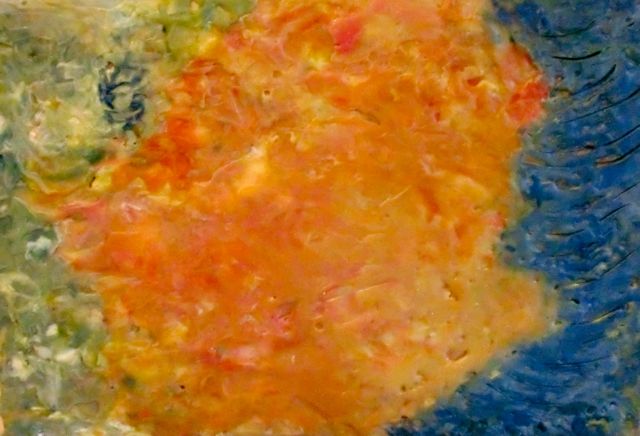Although a century has passed since Vaslav Nijinsky (1890-1950) danced in his prime, his artistic energy flows forward in time, crashing on the Four Season Centre’s stage in a wild wave of visionary brilliance. In fact, the stage holds but cannot fully contain John Neumeier’s Nijinksy, for I still carry the performance with me two days after I saw it.
When I think about the ballet, I am most haunted by the scene set in a Swiss hotel’s ballroom in 1919. There, the title character improvises a solo that turns out to be his final public appearance before symptoms of schizophrenia end his dance career (“John Neumeier’s Nijinsky,” by Michael Crabb, Performance Program, page 8).
In the hotel scene, Nijinsky stands holding one hand outstretched overhead, fingers spread wide, his body tense. Slowly, the hand turns into a fist. He drives the fist into his mouth, and as his arm continues to push down, the force of this movement pushes him all the way to the floor. He lies there with his fist still in his mouth, stunned by this primal act of self-harm.
When my eyes follow the trajectory of that cruel driving fist, I witness a moment of pain so raw and private that I shouldn’t be watching it because the anguish and despair feel real. The fist’s repression hints at a buried scream that it is desperate to silence. Inner struggle literally brings the dancer low, an artist known for his spellbinding leaps now slapping the floor with futile hands.
The second scene that I cannot forget arrives in the second act. Asylum inmates in dove-gray ballet costumes hoist a Broken Boy from their midst. He stands on the shoulders of two male inmates, and each member of the group that encircles him raises one arm straight up in the air, their palms the face of prayer.
When soldiers dressed in green jackets and undershorts storm the asylum, the Broken Boy gets crushed as they stomp around him in unison, their aggressive dance not softened by the presence of a woman with long hair in a body stocking. The Broken Boy tries to run but gets stuck. He is bent over, one of his hands steadying him on the floor while the other flies up. His jacket flops over his head as his legs spin in useless circles, going nowhere.
Looming over the turmoil are two large illuminated circles that tilt oppressively, and the choreography mirrors their shape in a pattern that Nijinsky follows as he twirls with his arms overhead in a perfect circle. At one point, an anonymous dancer circles the still figure of Nijinsky as if he is a Maypole. And during the Scheherazade dance, lines of dancers break off into circles like arcing beads of earth magnets as Nijinsky swoops lyrically, his body and arms creating symmetrical half-circles of constant movement.
The heartbreaking beauty of Nijinsky communicates what human disconnection feels like (hands and arms that undulate in proximity but rarely touch) and the suffering of a person crashing on the rocks of isolation and pain. Nijinsky’s psychological struggle reveals itself in unforgettable images: the fist in the mouth, the Harlequin kicking the stage wall, the Golden Slave with his arms crossed overhead as if bound by a rope, the man in the straightjacket rolling across the floor, and the long lengths of red and black velvet that twine around Nijinsky’s limbs in the final scene.
As a grateful viewer of this powerful ballet, I’d like to thank John Neumeier and the National Ballet of Canada for expanding my understanding of Nijinsky and teaching me through dance what no psychology or history textbook could express with such visceral impact.

3 replies on “Nijinsky Ballet Haunts Viewer”
This is an exquisite piece of writing about a ballet, and a dancer also exquisite — steeped in pain yet able to express it. I think you should send this to the National Ballet — I know someone in their publicity department and can forward the link to him, if you like. The piece makes me want to see the ballet, too.
PS — beautiful painting, too, Catherine!
Thank you so much for your encouraging and insightful comments, Ellen. They really mean a lot to me. That would be wonderful if you know someone in publicity who might like to read it and possibly use it as promotional material. I have sent it out in response to a viewer feedback e-mail from NBC, but it’s always helpful to send it to different people within the organization.